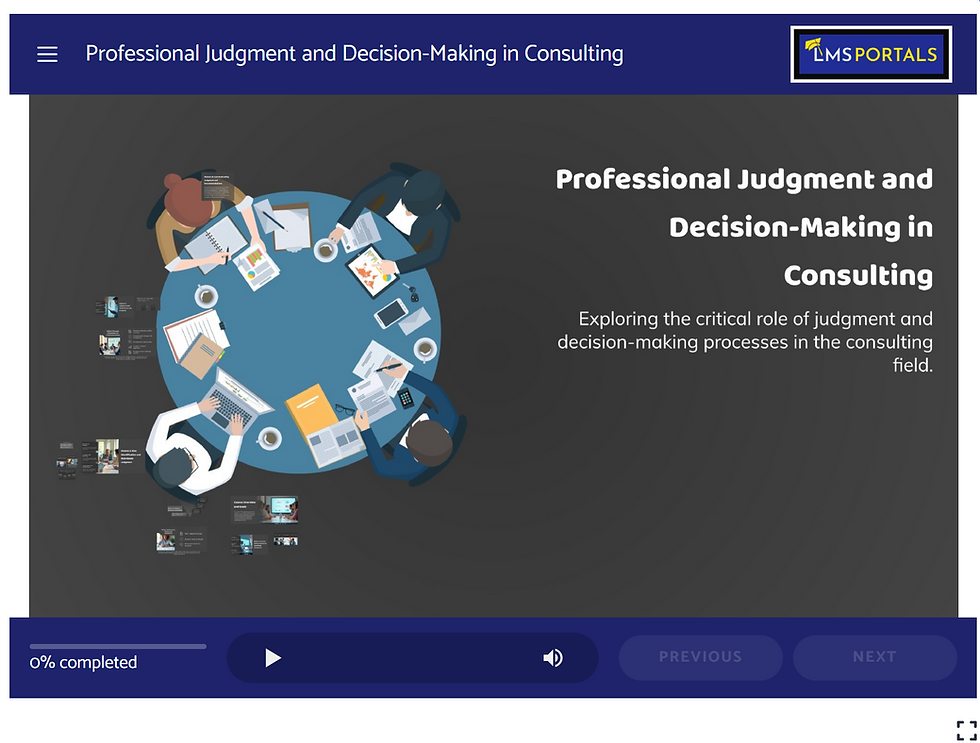How to Launch a SaaS Side Hustle Without Quitting Your Day Job
- LMSPortals

- May 30, 2025
- 4 min read

Starting a SaaS (Software as a Service) business sounds like a dream job. Recurring revenue. Location freedom. Low overhead. But what if you have a 9-to-5 job and can’t afford to quit? Good news: you don’t need to. Building a SaaS side hustle while keeping your full-time job is not only possible—it can be smarter.
Why Start a SaaS Side Hustle?
SaaS businesses scale well, offer predictable income, and don't require physical inventory. That makes them perfect for side projects. Plus, developing and testing a product while working full-time gives you the safety net of a steady paycheck and time to validate your idea without pressure.
Step 1: Identify a Real Problem to Solve
Start with pain. Find a specific problem that you or others in your industry face frequently. The best SaaS products are born from frustration. Look for tedious manual processes, spreadsheet hacks, or workarounds that scream for automation.
Validate Early
Talk to potential users. Don’t build first. Interview people, run surveys, join niche forums, and gauge how badly they want a solution. Pre-sell if you can. If people won’t pay or show strong interest, rethink the idea.
Step 2: Choose a Narrow Niche
Go small to go big. Instead of trying to build the next Salesforce, focus on a tight vertical: invoice tracking for freelance writers, scheduling for mobile pet groomers, or compliance tools for remote HR teams.
Benefits of a Niche
Easier marketing
Less competition
Clearer value proposition
Faster customer feedback loops
Step 3: Plan Ruthlessly
You don’t have unlimited time. Map out exactly what you need to build for an MVP (Minimum Viable Product). Cut features until it hurts. Your goal is to validate, not impress.
Time Management Tips
Block off 5–10 hours per week
Use productivity sprints (Pomodoro, timeboxing)
Batch similar tasks (e.g., all marketing tasks on Saturdays)
Step 4: Build a No-Code or Low-Code MVP
You don’t need to be a developer. No-code and low-code tools let you build robust products quickly:
Bubble: Drag-and-drop app builder
Glide: Turn spreadsheets into apps
OutSystems or Retool: For more complex applications
Or hire a freelance developer to build a basic version using tools like Firebase or Next.js. The key is speed and feedback, not perfection.
Step 5: Market Before You Launch
Start marketing early. Share the journey, tease features, and build an email list. Use platforms like:
Twitter (X) or LinkedIn
Indie Hackers
Reddit (targeted subreddits)
Your own blog or Medium
Create a Landing Page
Use Carrd or Webflow to create a simple page explaining your product and collecting emails. Give away something useful—a checklist, ebook, or industry insights—to grow your list.
Step 6: Monetize with Simple Pricing
Keep pricing straightforward: one plan or three max. Test monthly and annual options. Your first 10–20 paying users are gold: learn from them. Keep pricing flexible and transparent.
Step 7: Support and Iterate
Your side hustle doesn’t end at launch. Use customer support tickets as a roadmap for improvements. Prioritize bugs and pain points over fancy new features.
Use Lightweight Tools
Intercom or Crisp: For live chat
Trello or Notion: For task tracking
Google Forms or Typeform: For quick feedback
Special Focus: Building a SaaS LMS (Learning Management System)
One hot SaaS niche is education. If you’re looking for a proven model, an LMS (Learning Management System) is worth considering.
Why LMS?
Remote work and continuous learning have exploded. Businesses, creators, and educators all need platforms to train teams or sell knowledge. That’s where SaaS LMS platforms shine.
Niche LMS Ideas
Training tool for real estate teams
LMS for fitness instructors selling programs
Onboarding courses for startups
Compliance training for small businesses
Features to Focus On
You don’t need to build the next Moodle or Canvas. For an MVP:
User registration/login
Course builder with videos/docs/quizzes
Progress tracking
Certificate generation
Tools to Build With
LMS Portals or Teachable: Easy drag-and-drop course builders (great for MVP validation)
Custom Build: Use Firebase + React for a more tailored experience
Monetization Options
Subscription (monthly/yearly access)
One-time course sales
Freemium with upsells (extra modules, certifications)
Step 8: Know When to Scale
Once you hit steady growth and paying users, it might be time to scale. Options include:
Hiring part-time contractors
Automating support
Investing in paid ads or content marketing
But don’t scale too soon. Growth without retention is just churn with better optics.
Step 9: Decide If You Want to Go Full-Time
Eventually, your SaaS side hustle may out-earn your job. When you reach this point, ask yourself:
Is revenue consistent for 6+ months?
Do I have 6–12 months of runway saved?
Can I replace my income within 3 months of going full-time?
If the answer is yes across the board, congrats—you’ve earned the leap.
Summary
You don’t need to quit your job to build something great. A SaaS side hustle lets you test, learn, and grow without betting the farm. Start small, focus on value, and move fast. You might be closer to freedom than you think.
About LMS Portals
At LMS Portals, we provide our clients and partners with a mobile-responsive, SaaS-based, multi-tenant learning management system that allows you to launch a dedicated training environment (a portal) for each of your unique audiences.
The system includes built-in, SCORM-compliant rapid course development software that provides a drag and drop engine to enable most anyone to build engaging courses quickly and easily.
We also offer a complete library of ready-made courses, covering most every aspect of corporate training and employee development.
If you choose to, you can create Learning Paths to deliver courses in a logical progression and add structure to your training program. The system also supports Virtual Instructor-Led Training (VILT) and provides tools for social learning.
Together, these features make LMS Portals the ideal SaaS-based eLearning platform for our clients and our Reseller partners.
Contact us today to get started or visit our Partner Program pages



Comments